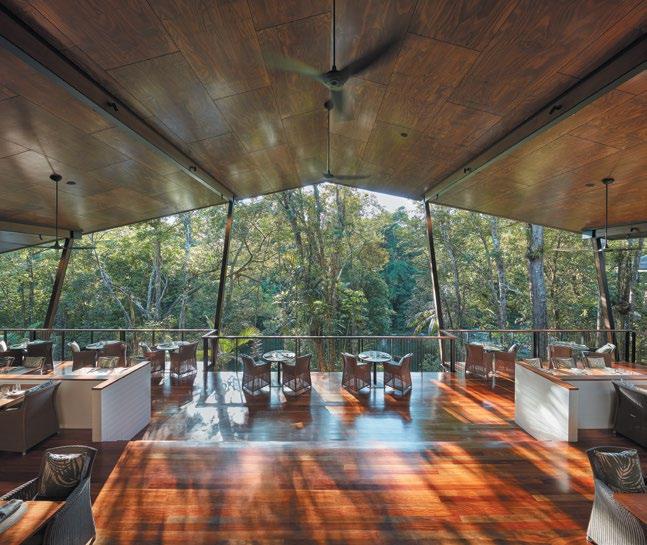
3 minute read
Raising the roof PNG Forest Products
PICTURES: SUPPLIED BY PNGFP

The Rakia Gorge bridge in New Zealand is constructed of NuiDeck decking system made by PNGFP (left); the Bulolo Country Club and golf course (this picture); a mess hall made by PNGFP (opposite).
raisinG THe rOOF
PNG Forest Products is a company building PNG and the South Pacific, piece by piece.
If you are standing in a school, a health clinic or workers’ quarters in Papua New Guinea, there is a fair chance the building has been made by PNG Forest Products (PNGFP).
The Port Moresby based company is the largest supplier of timber housing and infrastructure projects in the South Pacific, delivering more than 10,000 buildings in the region and more than 2000 in PNG, including 1000 PNG school buildings.
PNGFP supplies PNG’s only kit-set buildings, engineered to PNG and Australian building codes, that are preservative pressure treated to protect from termites and rotting.
The company also provides pressuretreated pine timber and plywood, and produces kit homes, modular bridges and bridge decking.
The company’s Managing Director, Tony
Honey, says: “We are producing and exporting some innovative and interesting engineered wood products that are value adding to an otherwise basic piece of plywood.”
He says modular bridges and decking are being exported to Australia and New Zealand, along with specialised railway bridge re-decking, sound barriers along Australian highways and rail corridors, and scarf-jointed bus and train floors for Australia, New Zealand, and Malaysia.
The origins of the company go back to the early 1920s, when Bulolo Gold Dredging Limited (BGD) was developing alluvial mining operations in the Bulolo Valley.
To facilitate this large-scale operation, housing was needed in the valley for hundreds of workers and their families. So BGD secured timber permits, established a sawmill and joinery, and set about building a town, complete with school and hospital.
By the mid-1930s, eight dredges worked the valley floor, powered by BGD’s own hydro-power stations. As the operation grew, so did the town and the need for more timber.
To meet this demand, the Forestry Department eventually established a pine
nursery and reforestation program. More than 60,000 pine trees were planted in 1948, and each year thereafter.
When the mining operation scaled down, BGD formed Commonwealth New Guinea Timbers Ltd and constructed a plywood factory. Plywood production and the export of the product overseas started in 1954, signalling the birth of a new industry.
Today, PNGFP employs about 1300 Papua New Guineans and is committed to building a better future through sustainable manufacturing practices.
Timber is sourced from renewable pine plantations managed by PNG Forest Services. Sawdust and wood chip waste from the mills are utilised to power the boilers for the veneer driers and kilns.
PNGFP also works in conjunction with the Department of Environment and Conservation to ensure that the best environmental practices are maintained.
As a further commitment to sustainability, the company’s manufacturing facilities in Bulolo are powered by its own hydropower stations, one of which was originally established by the BGD company in the 1930s.
Operating three hydro-power stations, with a fourth nearing completion, PNGFP is the only independent power producer in the country that supplies hydro-power to PNG Power.
In Bulolo, PNGFP also operates a supermarket, bakery, butchery, liquor store, hardware store, service station, country club, abattoir, poultry farm and a 600-hectare cattle farm, all servicing the town and surrounding districts. “Our future lies in adding value to our resources, whether it be timber, land or water,” says Honey. “Improved recovery from our log supply is essential, as is developing new products for our Pacific region.
“Continuing our diversity through power generation, forest products, and poultry and cattle operations develops employment and sustainable income. Continuing reinvestment in our business is the key to our continued viability and the core to our future success,” he says.














